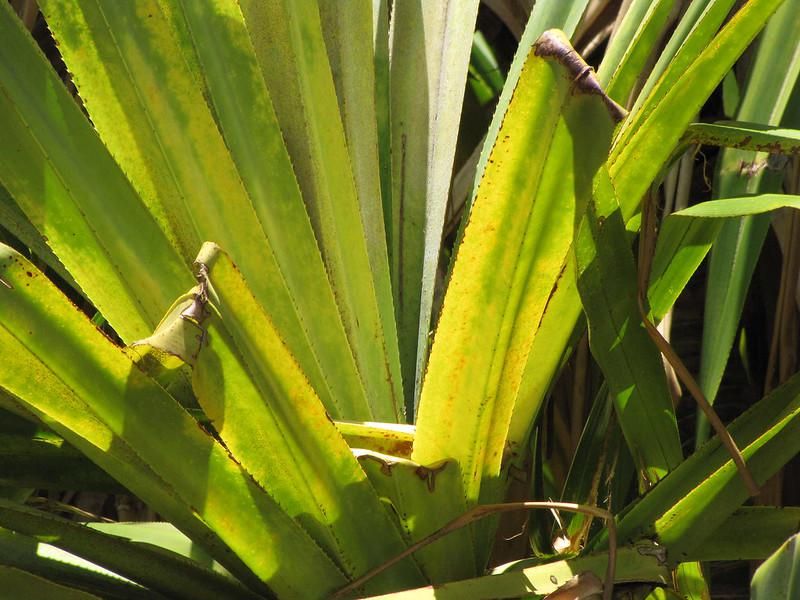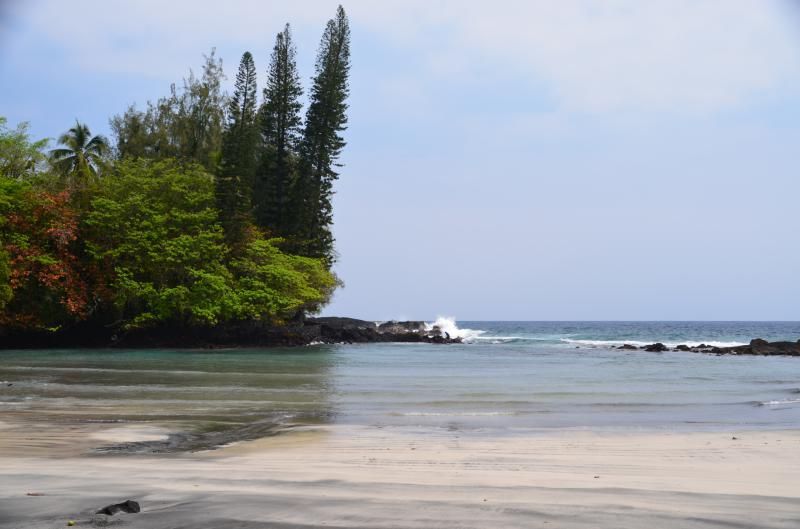Digital Collections
Celebrating the breadth and depth of Hawaiian knowledge. Amplifying Pacific voices of resiliency and hope. Recording the wisdom of past and present to help shape our future.
Kīhei de Silva
Haku mele: Johnny Noble attributes the song to Kalākaua, but it was composed by Lili‘u in 1876.
Sources: 1) HEN 3:893–894, Bishop Museum Archives. 2) Kapi‘olani Kalaniana‘ole Collection, HI.M.30:323, 407, BMA. 3) Henriques-Peabody Collection, HI.M.77:33 and HI.K.23.1:13, BMA. 4) He Buke Mele Hawai‘i, Lili‘uokalani Collection, M-93, HSA. 5) Johnny Noble, Royal Collection of Hawaiian Songs, Miller Music, 1929:138. 6) Beamer and Ohumukini, Compositions by, for, and about Her Majesty Queen Lili‘uokalani, K.S. Extension Education, 1978:94. 7) The Queen’s Songbook, Honolulu: Hui Hānai, 1999, 244–248.
Discography: 1) Genoa Keawe, Hulas of Hawaiʻi, GK Records GK 101. 2) Palani Vaughn, Iā ʻOe E Ka Lā, Vol. 1, Nākahili NP 100. 3) Dennis Kamakahi, Puaʻena, Dancing Cat Records, 08022-38036-2.
Text below: He Buke Mele Hawai‘i, Hawaiʻi State Archives. Edited and translated by: Kīhei de Silva.
Hia‘ai, hia‘ai i ka nani,
O a‘u lehua i Hōpoe lā
Ke ona ‘ia maila e ka ‘iwi,
E ka manu hulu weo i ‘Ōla‘a.
HUI
Ninipo, ho‘onipo i ke aloha,
Ka wahine ha‘ale‘a, lewa i ke kai,
Ke niniau ala i ke one,
I ke kai nupanupa i Hā‘ena.
Lou iki Pana‘ewa i ka hala
I ka lihi ka pilina o Moeawakea
Ke nihi a‘ela ka ua nihi ma kai,
‘O ka welelau noe kai o‘u nei.
‘Ike maka i ka nani a‘o Puna lā,
Nā lae ulu hala o Ko‘oko‘olau,
Ke oni a‘ela molale i ke kai,
Nā oho lau māewa luhe i ka wai.
I Hilo nō ka makani Pu‘ulena
Lohe i ka ‘ale a ke kai holuholu i Huia,
Ua mau akula luna o Maukele,
I ka pākalikali a ka Malanai.
Delighted, delighted by the beauty
Of my lehua flower at Hōpoe
So attractive to the ‘i‘iwi
The red-feathered bird of ‘Ōla‘a.
CHORUS
Entranced, caught up in love-making
Is the woman swaying, dancing in the sea
Moving softly in the shallows
In the lush, thriving sea at Hā‘ena.
Panaʻewa offers slight resistance in the hala
At its boundary is Midday-tryst
Moving lightly is the seaward-creeping mist
The ocean-mist extremity of mine, here
Witness the beauty of Puna
The hala-covered brow of Ko‘oko‘olau
Reaching out, unobstructed into the sea,
The swaying leaves are heavy with water
The Pu‘ulena wind has indeed been to Hilo
Attentive to the surging sea of Huia
It persists in the uplands of Maukele
Where the Malanai gives only a little at a time.
Contrary to the impression created by popular recordings of the last quarter century (Dennis Kamakahi’s version and liner notes on his CD Puaʻena are the notable exception), "Ninipo" is not a neat bundle of words that has survived, intact, the 130-or-so years since it was reputedly composed by David Kalākaua. Indeed, the two "Ninipo" with which we are most familiar—those recorded by Genoa Keawe and Palani Vaughn—turn out to be abbreviated, high-energy renditions of a 20th century, Johnny Noble revision. Although these renditions provide the text, tune, and tempo that have inspired most modern performances of the mele, unpublished manuscripts in the Bishop Museum and Hawaiʻi State Archives clearly indicate that Noble’s is not the definitive "Ninipo" and that Kalākaua is not its author.*
The original "Ninipo" is a hefty 20 line, four-verse-plus-chorus composition that appears in Lili‘uokalani’s He Buke Mele Hawaiʻi over the signature and note "Lili‘u, Hilo, 1876." The words of Lili‘u’s first two verses and chorus differ only slightly from today’s conventional text; these 12 lines, in fact, constitute the "complete" piece as presented by Noble, Keawe, and Vaughn. More interesting, perhaps, than the obvious fact that Lili‘u’s original exceeds these later versions by eight lines is the seemingly uncooperative phrasing of her extra lines. The meter of "Na oho lau māewa luhe i ke kai" and "I ka pākalikali a ka Malanai" is not quite the meter established for the closing line of each verse by "E ka manu hulu weo i ‘Ōla‘a." The sheer number of syllables in "Lohe i ka ‘ale a ke kai holuholu o Huia" presents a nearly impossible mouthful to anyone attempting to sing the line as dictated by the meter of "O aʻu lehua i Hōpoe." Irregularities of this sort led me to conclude, several years ago, that Lili‘u’s original was a work in progress whose words and music were still in the process of reconciling their differences. That conclusion, however, has been tempered considerably by Dennis Kamakahi’s "new" version of the song that he describes, with characteristic understatement, as "a little different in the melody line than other versions." Kamakahi’s version, as it turns out, is Lili‘u’s. It is considerably more languid than what we’re used to, and its relaxed rhythms give him plenty of time to sing all of her words. Kamakahi’s recording, then, generates a new appreciation for the queen’s work and a consequent re-evaluation of Noble’s piece. Simply put: Noble’s is no longer the standard by which we should define the song.
"Ninipo" describes a woman’s escape from the restrictions of Hilo, her quick passage through the tangle of Pana‘ewa, her lovers’ assignation at Moeawakea, and their sensuous immersion in the sea of Hā‘ena, Puna. The imagery of the first verse is that of irresistible attraction: like the Hōpoe of bygone days, she is a delightful, perfectly formed, full-bodied lehua blossom; her lover is an infatuated—and equally infatuating—scarlet-feathered ‘i‘iwi who waits at the ‘Ōla‘a boundary of Hilo and Puna. The imagery of the second verse implies opposition, stealth, and success: the hala trees of the Panaʻewa trail hook ineffectively at our Hōpoe, but she slips by like a tip-toeing mist; the lovers then meet at "Midday Sleeping" (Moeawakea is both an ‘Ōla‘a place-name and part of a figurative expression for an all-consuming love affair) and journey to the sea of love. The imagery of the third verse suggests the complete and unrestrained ardor of their journey: Ko‘oko‘olau extends unobstructed into the ocean; the union of land and sea produces a heavy deposit of moisture on the hala leaves of that jutting point. Clearly, the hala of this verse is quite different from that in verse two. Here the drenched hala is associated with Hōpoe’s union with her much-desired lover; there the "hooking" hala is associated with her escape from an ineffective and undesirable male. This comparison of male rivals might also lie at the heart of the wind imagery of the somewhat obscure final verse: the potent Pu‘ulena of Puna travels all the way to Hilo, attends to the surfing wave of Huia (more "joining"), and returns home unexhausted to Maukele. The easily depleted Malanai, on the other hand, can only dispense pleasure in small increments. The Pu‘ulena, then, is the superior lover; to him goes Hōpoe. The Malanai, on the other hand, is decidedly less able; to him goes a traditional saying for missed opportunities and events that can’t be undone: "Hala ka Pu‘ulena, aia i Hilo – The Pu‘ulena has gone to Hilo" (Mary Kawena Pukui, ‘Ōlelo No‘eau, #424).
As "Ninipo’s" chorus weaves through this narrative of escape and consummation, it establishes then reiterates the song’s focus on the all-absorbing, unhurried dance of love. The single image of this chorus is that of the Hōpoe-stone swaying in the sea of Hāʻena, Puna. Kawena Pukui’s ‘Ōlelo No‘eau #1113 reviews the origins of the epithets "Ka wahine ha‘alewa i ke kai" and "Wahine ‘ami" by which the stone is known:
Hōpoe was a dancer of Kea‘au Puna, in that long ago day when gods mingled with men. Because of her dancing and her kindly nature, Hōpoe was taken by the goddess Hi‘iaka as a favorite friend. When Pele sent Hi‘iaka to Kaua‘i to fetch Lohi‘au, the first request Hi‘iaka made to Pele was to be kind to her friend, Hōpoe. After a time, when Hi‘iaka did not return as expected, Pele in a fit of rage destroyed Hi‘iaka’s grove and the beloved Hōpoe. The latter was changed into a balancing stone that seemed to dance in the sea. [Pukui reports in Place Names of Hawaiʻi that the stone was toppled in the tidal wave of 1946.]
The tragic aspects of Hōpoe’s transformation had faded long before Lili‘u’s time; for Hawaiians of the queen’s day, the stone evoked pleasant memories of its namesake’s compelling beauty (Nupepa Kuokoa, "Pau a‘ela ho‘i Kuhihewa," 4-30-1864). In "Ninipo" the stone acquires an even more positive status: it represents an ideal of emotional freedom and fulfillment. It is at Hā‘ena where yearning (ninipo) becomes love-making (hoʻonipo). It is at Hā‘ena where the desires of the heart are expressed, acted upon, and endlessly gratified. Lili‘u’s juxtaposition of the Hilo and Puna districts—the one oppressive and impotent, the other exhilarating and sensual—appears often enough in her compositions ("Nani Haili Pō i ka Lehua" and "‘Apapane," for example) to suggest a biographical connection. Lili‘u’s marriage to John Dominis was far from satisfying: although he cut a dashing figure while courting her, he proved to be a cold and unresponsive mate. His affections were governed by a domineering mother, his physical needs were met by a series of mistresses, and his disregard for Lili‘u was such that even his close friends sought to shield her from the sordid details of his indiscretions (Helena Allen, The Betrayal of Liliʻuokalani, 159). By 1876, the date of "Ninipo’s" composition, Lili‘u had been married to Dominis for 14 years and had spent most of the last eight living in a separate residence. It takes little imagination to see "Ninipo’s" story of flight and consummation as inspired, at least in part, by Lili‘u’s desire for escape from a failed marriage to a husband who "hooked" inexpertly at her and doled out affection in parsimonious, quickly exhausted increments. In the private geography of Lili‘u’s mele, Hilo and Pana‘ewa may well be metaphors of the unhappiness to which she was bound; ‘Ōla‘a, Hā‘ena, and Puna may well be metaphors of the fulfillment for which she yearned.
The essay above was written by Kīhei de Silva and published in his book He Aloha Moku o Keawe: A Collection of Songs for Hawai‘i, Island of Keawe, Honolulu, 1997, pps. 15–17. It is offered here, in slightly revised and updated form, with his express consent. He retains all rights to this essay; no part of it may be used or reproduced without his written permission.
*This article was written two years before the publication of the Queen’s Songbook; its Hui Hānai editors have arrived at a conclusion similar to my own: "[Noble] identified Kalākaua as the composer of the words and music for ʻNinipo.’ This must be an error. The archival evidence and the song’s generous use of nature images support the conclusion that the lyrics, at least, were written by Lili‘uokalani" (248). Hui Hānai also notes a difference in the Buke Mele and Noble melodies, "with a more generous use of repeated notes in the [former] version, suggesting that it is the Queen’s melody. The dotted note patterns in the Noble version are characteristic of marches Henry Berger arranged for the Royal Hawaiian Band" (248).

photo credit: Forest & Kim Starr

photo credit: Forest & Kim Starr

photo credit: Forest & Kim Starr
Pūhala (the tree), lauhala (the leaf), and ulehala (the root). The dual nature of hala—it is connotative of end and beginning, entanglement and embrace, transition and rootedness, emptiness and ardor—is evident in the second and third verses of “Ninipo.” In verse two, the hala of Pana‘ewa “hooks” possessively at our light-footed, departing lover. In verse three, the hala grove at Ko‘oko‘olau welcomes her with the promise of freedom and passion.

photo credit: Thomas Tunsch, Wikimedia Commons
The beach at Hāʻena, where yearning (ninipo) becomes love-making (hoʻonipo).